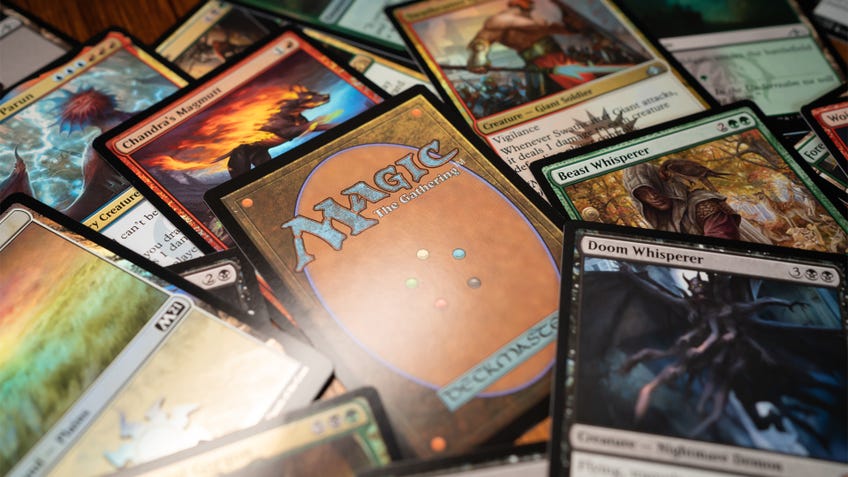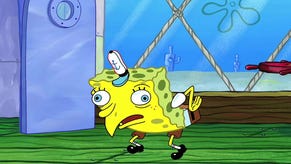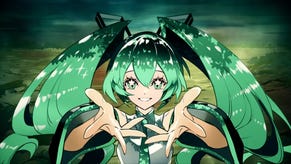Commander is the best way to play Magic: The Gathering
Bigger is better.
Magic: The Gathering is one of the biggest and longest-running trading card games in existence, and it’s kept its position at the top for good reason. It’s an incredibly rich and tactical experience that promotes creativity, wild and interesting card interactions, and allows players to express themselves and how they like to play through the breadth and depth of a single card game.
The only problem is, Magic is older than, well, me. And with that incredibly long history comes a lot of baggage. There are more cards out there than any one person could feasibly keep in their head, pages and pages of lore to keep track of for those interested in its story, and a lot of its older mechanics have grown a little bit clunky and difficult for new players to grasp.
It’s also been around long enough that there’s a massive amount of assumed knowledge and competitiveness that the game thrusts upon its players regardless of the experience that they’re looking for.
If you’re a new player jumping into a standard game on MTG Arena or at your local game store, you might hit a bit of a wall where you feel the crushing weight of competitiveness sucking the fun out of the game. A lot of players will take one game of being land-locked too many and just give up on what can be an extremely time-consuming, brain-consuming and expensive hobby.
What if there was a way to play Magic: The Gathering that was explicitly designed to keep the game a fun, approachable and social experience? What if instead of grinding it out on the Arena ranked ladder against your 17th Rakdos rush deck, you could be having a fun and chill time casting big silly spells and getting into petty squabbles over where someone should swing their 7/7 with Trample? That’s where Commander comes in.
A lot of you will likely already be familiar with Commander. It’s currently the most popular way to play Magic: The Gathering in paper form. But if, like me, your first experience of Magic was through the very popular free-to-play online version of Arena, Commander might have passed you by. Don’t let it. Commander is, in my opinion, the absolute best way to play Magic: The Gathering.
In Commander - originally known as EDH, which stands for Elder Dragon Highlander - players construct an exactly 100-card deck of Magic: The Gathering cards from throughout the game’s history. As the name suggests, there’s one card that takes precedence over all the others in the deck: your commander.
In the earliest EDH format, your commander could only be one of MTG’s five original elder dragons - the first multi-coloured creatures printed by Wizards of the Coast. Nicol Bolas was the most notable, with their presence being front and centre in a lot of sets since. That’s where that Elder Dragon part of EDH came from.
Nowadays, though, a commander can be any of the many legendary creatures that have been printed in the hundreds of sets released over Magic’s storied 30-year history. As long as it says legendary creature under the art, or if it’s a planeswalker that states it can be played as a commander, they can be your leader.
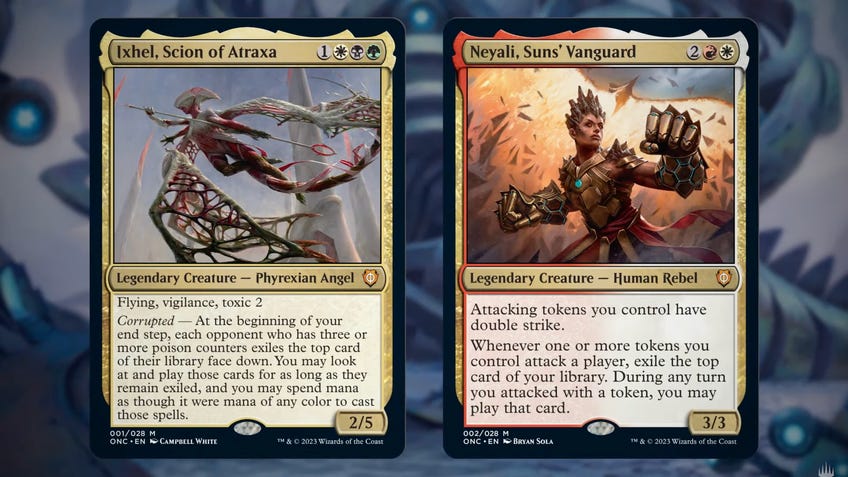
Commanders are special for two reasons. One: you don’t have to draw them from your massive 100-card deck to play them. Instead, they sit in the Command Zone, an imaginary area off the board from which they can be summoned at will for their standard cost. If they die or get exiled, you can choose to whack them back into the Command Zone, allowing you to cast them again and again - albeit with a slightly higher cost each time.
Two: your commander denotes the cards that you’re able to place in your deck, as every card in it must match the colour identity of your commander. That’s denoted by the colour of mana in its own cost.
Commander is currently the most popular way to play Magic: The Gathering in paper form.
It’s not just the colour identity of your commander that matters. Any mana symbols that appear on the rules text of the card, or even on the flip side of a two-sided creature, will count towards the colours they can play. Jegantha, The Wellspring is a Red/Green creature, but because of its tap ability at the bottom of the rules text, it can actually field cards of any colour in its deck.
However, that restriction goes both ways: if I wanted to have Jegantha in my Red-Green commander deck, I wouldn’t be able to because of those White, Black and Blue symbols that appear under its tap ability.
Once you’ve got all your favourite sorceries, creatures, lands and artifacts out and you’re ready to start building your Commander deck, there’s one more restriction you’ll need to take into account. Commander is a singleton format, which means you can’t have more than one of each card in your deck - unless it’s a basic land or it has a special rule allowing you to have multiple written on the card.
Commander is designed to be played with a group of four people, each running different decks. You’ll start with a whopping 40 health each, and the last player standing takes home the win. As you can probably guess, hitting zero health will knock you out of the game. As an alternate win condition, you can also lose the game if you take 21 or more damage from the same commander - a good way of taking down any pesky lifelink decks that have gotten themselves to scarily high life totals, or an incentive to build your deck around your commander as your main attacker.
Those are all the differences between Commander and standard MTG. There’s a very small list of banned cards, but outside of that any card that has been printed since Limited Edition Alpha is up for grabs. It’s designed for four players, but you can play with any number your heart desires - the rules of Commander remain exactly the same.
So, with such small differences between this and normal Magic, why am I waxing lyrical about it? What is it about this format that’s got me so hooked?
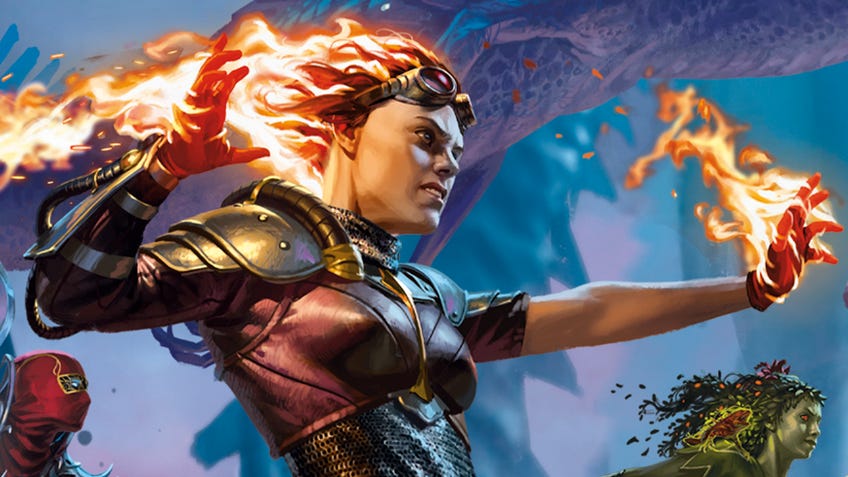
Well, first things first, your commander is worthy of its eponymous epithet. Much like the companion mechanic we’ve seen rear its head in MTG sets, having a single legendary creature always available to you is an incredibly powerful thing. No matter how many times your commander gets destroyed, exiled or bounced back to your hand, as long as you have the mana to afford them, you can get them on the battlefield again.
That means instead of amassing a collection of cards that all hopefully complement each other as best as possible, you end up building a deck that synergises with this one card. No matter what cards you draw each game, you’ll always have your commander available to start building your combos around.
If you have a favourite legendary creature from your years of playing Magic, especially one that gets exiled every time you put it on the board in a standard game, you can finally have them be the star of the show.
Your commander is the identity of your deck. It could hint at the tribe you’re hoping to play, power the engine you want to build or enable you to use your favourite mechanic in the game. Big fan of treasure? Find a commander that utilises them. Love angel creatures? Build a tribal deck with a big scary Angel creature as your commander. The possibilities are endless.
But also, they’re not endless, are they? Because your favourite Commander creature is also going to limit the possibilities of what you can put in your deck via its colour identity. Example: I really love making token spam decks, and all the cards in New Capenna that flooded the board with citizens were a great fit for one of my favourite creatures: Mondrak, this big horrible mouth from Phyrexia: All Will Be One. But if I make Mondrak my commander, I can only use White cards in the whole of my deck. So I have a choice: do I put Mondrak in the 99 cards and hope he comes up in play? Or do I make him my commander and miss out on all those amazing token-spamming cards from the other colours?
The singleton nature of the game, and the massive deck size, means that you’re not going to be able to reliably get your strongest cards out on the board either. You can’t just have four copies of the same card in a 60-card deck and be pretty much guaranteed to draw them eventually. In fact, you can very easily go through an entire Commander match without your favourite card ever appearing. (Which will likely leave you wondering if they’re better off as a commander!)
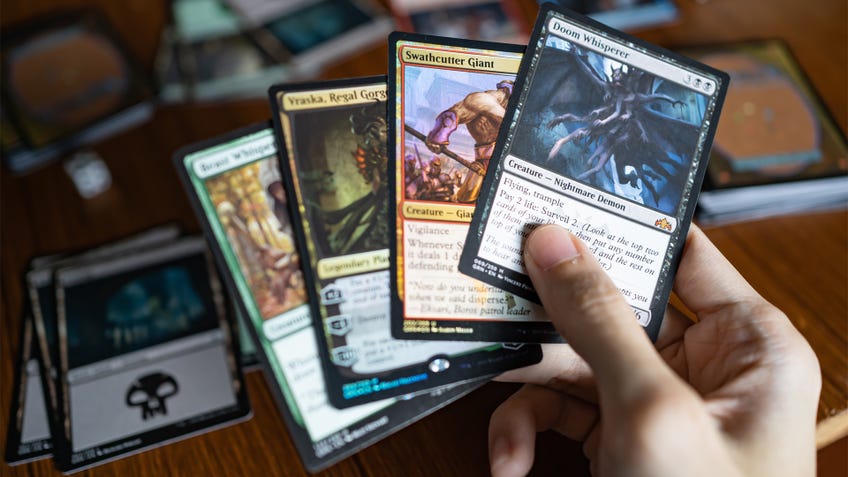
A lot of deck construction in MTG can feel like maths homework. Checking your mana curve, finding the ideal number of lands, figuring out what percentage of your deck should be taken up by the same game-winning creature. Building a Commander deck feels a lot more like you’ve got a special clubhouse with strict membership policies and you’re trying to fit all your favourite cards in at once. And there’s room for more than you think! You’ve got to get 100 cards in there somehow, so you can’t afford to be too picky either. Limitation breeds creativity; you’ll be making some really wild and interesting decks before you know it.
Something about that big showpiece creature leading your force brings out the expressive side of deck-building, too. I’ve found myself less interested in whether or not a card I’m adding to my deck is ruthlessly synergistic with everything else in there and more concerned with how thematic it is. The Fall of Atraxa might be a useful card, but it literally shows my Commander dying - so I don’t want to put it in my deck!
That’s just the deck-building. Which, while fun, is still only half of Magic: The Gathering. What Commander really excels at is improving the state of play as well.
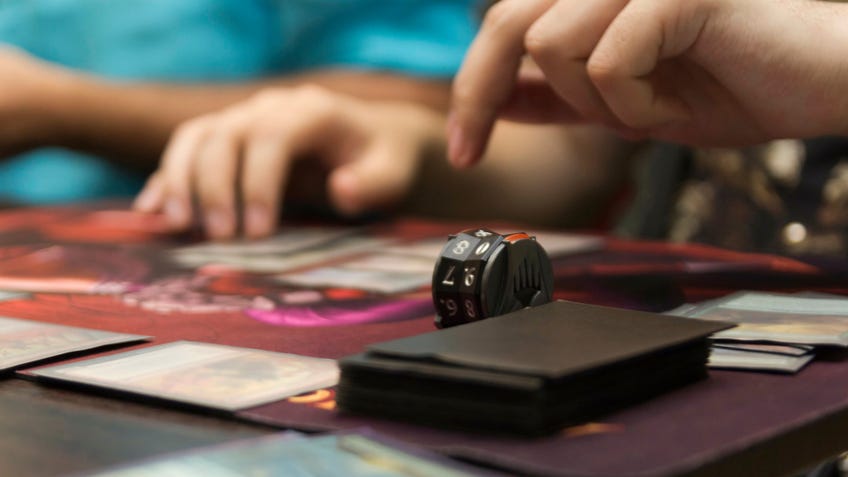
When you go to the official Commander site, you’ll notice that the very first link on the page leads to the format’s philosophy. There are four words at the top of the page: “Commander is for fun.” This is not a format about ruthless efficiency and competitive play. To quote its creators: “It’s a socially interactive, multiplayer Magic: The Gathering format full of wild interactions and epic plays, specifically designed as an alternative to tournament Magic.”
What a lovely sentiment! I honestly couldn’t have put it better myself. This was such a load off my back going from sweaty competitive matches on Arena, being griefed by Blue-Black control decks spamming passive-aggressive emotes to try and make you rage quit out of the game, to a MTG format that specialises in fun, silly, emergent interactions that come from the humans playing Magic - and not just a competitive deck list that someone has spent hundreds of pounds recreating.
I can’t even begin to express how much more interesting Magic games are when the players aren’t just focused on how quickly their decks can win, but instead on how much fun they are to play.
One of the most fun parts of Commander is the politicking that goes on around the table. “If you don’t hit me with that creature, I won’t use my board wipe.” “We need to team up against this player because they’re getting too strong.” “Let’s form a fragile allegiance as the two weakest players.” These sorts of situations are what you typically expect from board games more than trading card games, and they’re the interactions that Commander is built to foster.
You can see this in the Commander cards released by MTG maker Wizards of the Coast. Cards that let people vote on what happens. Cards that shake up the base rules to introduce chaos on the table. New types of legendary creatures that let you combine two cards to make your commander.
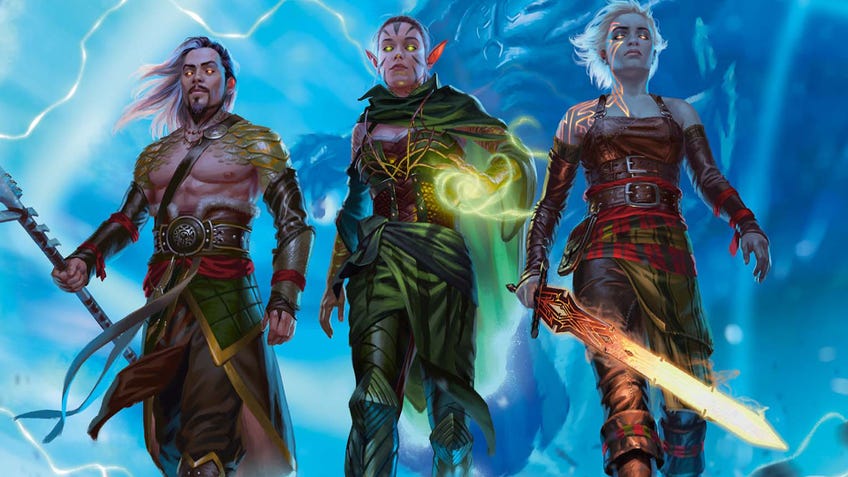
I can’t even begin to express how much more interesting Magic games are when the players aren’t just focused on how quickly their decks can win the game, but instead on how much fun they are to play, how much silliness they introduce or how much they can express their identity with them.
There are other benefits you get from the small rules tweaks in Commander, too. By aiming for four-player games, and bumping up the health totals to 40, games typically run a lot longer than your average game of Magic. This helps to give players space to get their board state built up over a longer period of time at the start of the game: setting up their engine, getting lands on the board and rooting through their deck for key spells. There’s less pressure in the early stages to do something game-changing on every turn.
This is a format where you’ll see a lot more utility artifacts get played, a lot more mana-ramping happening across the board and cards that might not be useful in Standard formats due to their super high cost or specificity given a new lease of life.
The extended time and added player count also tends to give players who are falling behind a bit more breathing room. Most good-natured players who understand the philosophy of the game don’t want to be responsible for blasting someone with a ton of damage when they’re flailing for cards and left undefended, knocking them out of the game. There’s a general understanding of spreading out the aggression and letting those that are landlocked or top-decking re-establish themselves rather than bullying them and kicking them whilst they’re down, as you might be forced to in a competitive one-on-one duel.
That’s not to say that Commander can’t be competitive if you want it to be. Competitive EDH is a variant for those looking for that high-level, tournament-like play, but with the fun deck-building restrictions of Commander still at its base. There’s a general unwritten rule generally understood amongst players that you should begin each match ensuring everyone around the table is looking to get the same experience, or play with decks of similar power level.
If you want to unleash your most terrifying, infinite combo-filled, salt-harvesting deck, you’re allowed to. There’s nothing in the rules to stop you. But you’re supposed to communicate that with your competitors and make sure you’re not going to be blasting them out of the water because they’ve all brought silly and thematic decks to the table that aren’t going to compete on the same level.
It’s like a Session 0 for an RPG. Everyone gets on the same page and makes sure that the game you’re all about to play is the most fun you can have together. Because no matter how good you are at Magic, playing a one-sided game with no real challenge isn’t entertaining for anyone involved.

Another one of my favourite things about Commander is what a great base it is for designing game variants. People have been inventing their own versions of Magic: The Gathering since the card game started, EDH included. But the thematic, multiplayer, low stakes nature of Commander allows for a really great shared atmosphere for introducing ways to mix up the game.
Planechase adds some randomness and game-changing effects via big showpiece cards that affect every player, and have people around the table rolling a die to see what happens next. Oathbreaker has players take charge of powerful planeswalker cards with their own signature spell that lets you put instants and sorceries in the Command Zone. There are Pauper variants that restrict you to only using common cards, a hidden-role game and a mode where everyone plays one of the five colours as a mono deck, trying to defeat their philosophical enemies. It’s a hugely varied and versatile format that crams so much replay value into an already terrific game.
The thematic, multiplayer, low stakes nature of Commander allows for a really great shared atmosphere for introducing ways to mix up the game.
I’ve talked about how incredible Commander is and why you should play. You might be wondering how to actually get started. Building a 100-card deck around a legendary creature can sound hard and expensive. Yet there are a few ways you can jump in without spending too much money or time. The question is how much you’re willing to spend.
If you’re lucky enough to have friends that play Commander (and they are nice people), I’m sure one of them will lend you a deck. Most people that really love the format have multiple decks they play with. So if you just want to get playing right away and you’ve got a group already in the hobby, that’s your best bet.
If you’re looking to play at a local games store with randoms or maybe online, you’ll probably need your own deck unless a kind stranger can lend you one at the next local Commander night.
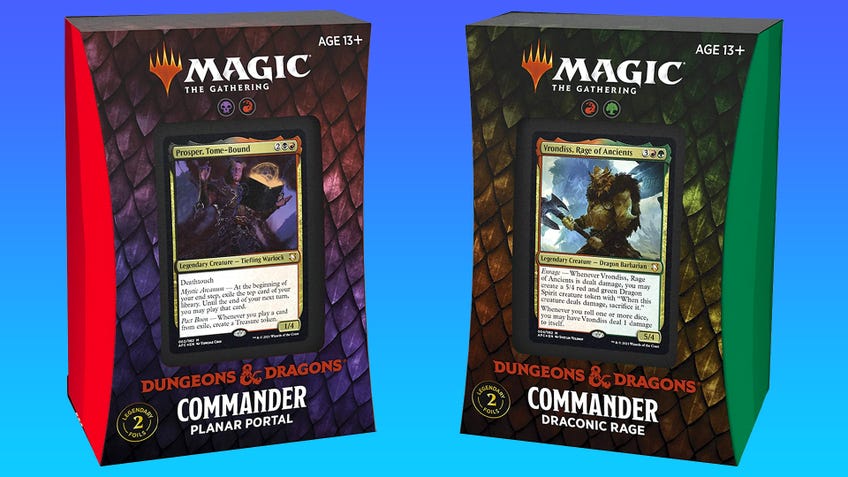
Pre-built Commander decks are pretty readily available. New ones come out with each Magic: The Gathering set. But they can vary in quality. I picked up the Kasla, The Broken Halo deck from the recent March of the Machine release and it’s really really fun, with lots of cool interactions in its construction - I’d happily recommend it. Others, though, can feel like a bit of a dud, so it’s best to do your research online and see what people are saying about them.
If you don’t mind buying a fixer-upper, grabbing one of the unpopular ones from previous releases and making your own changes could be a good way of saving money if you’re savvy with deck-building and know what a deck needs to make it play more smoothly.
But if you are good at deckbuilding, that’s where the best option comes in: buy singles. Make a deck online from scratch and you’ll have complete control over the cost, the theme and the card variants you use. You can splash out on a foil variant for one of your favourites, maybe your commander, and you can find cheap, battered versions of cards you want in your deck that you don’t care about as much.
There are loads of websites that help with deckbuilding, from online building tools to websites like EDHREC that specifically show you the cards that most people use with your favourite commanders. You can search by card, by colour, by what mechanics you want to build around or what tribal deck you want to build. There are also loads of resources on YouTube for making cheap and cheerful but effective decks. Top ten lists, build guides or even just playthroughs of someone using your favourite commander will help you get the most out of your deck.
Pre-constructed decks usually retail for around £40. If you’re happy to do your research and find less popular versions of the cards you’re after, you can easily build a complete deck from scratch for far cheaper than that. The nature of a singleton deck also means that you don’t have to buy four copies of a very expensive card, because you can only have one copy anyway.
Commander has completely reframed my relationship with Magic: The Gathering.
If you want to just try the format and dip your toes in without spending a single penny, but don’t have a group of players near you, you can also try Brawl on MTG Arena. Brawl is like one-on-one Commander with 25 health, either with Standard rotation cards or Historic like you’d normally play Commander with. You can build some decks, try out what you like best and play some games before you spend any money.
If conversely, you’re happy to buy decks or even have some at home but there’s no-one around to play, there are online ways of playing. SpellTable only requires a webcam and a microphone to play paper Magic with people online by casting your table to them and chatting over mic. There’s a built-in tool that can recognise cards on people’s tables so you can read them easier, and the site keeps track of all your health, commander damage, poison etc. so you don’t have to. It’s free and run by Wizards itself, so there’s usually a fair amount of people playing.
No matter how you start playing, or where you do it, if you haven’t tried Commander, you should give it a go! It’s an absurd amount of fun and has completely reframed my relationship with Magic: The Gathering. There’s a very good reason it’s the TCG’s most popular format.
